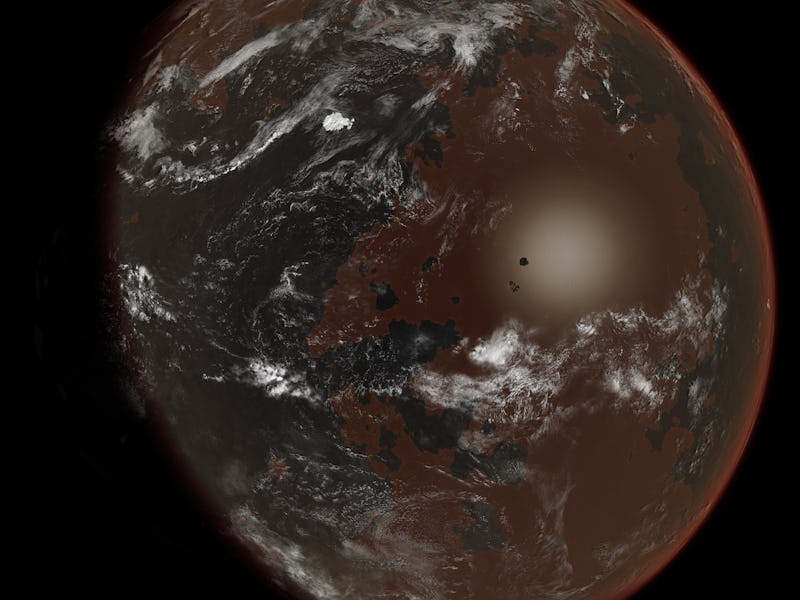Here's Why It's Illegal to Seed Planets With Alien Lifeforms From Earth
"Planetary protection" is a critical part of galactic exploration.

The chance of finding life on another planet remains remote. But as we expand our study of other worlds and come to terms with just how many planets there are in the galaxy (spoiler: a lot ) it’s important to consider the ramifications of a human-led alien invasion. What happens if we seed other planets with Earth life? From a scientific perspective, the answer is tremendously complicated. From a legal perspective it’s simple: Someone goes to jail.
No nation or entity on Earth is allowed to transport non-human life to any celestial bodies with the intent of jumpstarting an ecosystem.
This is because of “planetary protection,” the notion that human exploration of space must be guided by a principle of both protecting space environments from undue influence at the hands of humans, as well as protecting Earth from being irrevocably transformed by materials and objects originating from celestial bodies. In other words, the natural processes of the universe should move forward naturally.
When we talk about seeding other worlds, we’re specifically talking about “forward contamination.” Back contamination, by contrast, is where extraterrestrials would be shipped back to Earth and introduced into the wild. And there’s over a half-century’s worth of international space realpolitik at play here. Planetary protection was first discussed in 1956 at the International Astronautical Federation 7th Congress in Rome. Two years later, the U.S. National Academy of Sciences formally expressed concern about lunar and planetary studies that had the potential to comprise natural environments on other worlds.
The surface of a mysterious planet or someplace in New Mexico?
As a result, in 1959, the Committee on Space Research (COSPAR) was formed by the international community, and five years later issued a resolution saying “all practical steps should be taken to ensure that Mars be not biologically contaminated until such time as [the search for Martian life] can have been satisfactorily carried out.” A few years later, in 1967, the major players in space exploration — the U.S. the USSR, and the UK — formerly ratified the United Nations Outer Space Treaty. The treaty provided a legal framework that touched on a broad swath of activities anticipated to be of importance to future generations (e.g. barring weapons of mass destruction from being placed in orbit or on other planets or moons, and forbidding military bases in space).
Article IX of the treaty reads:
“States Parties to the Treaty shall pursue studies of outer space, including the moon and other celestial bodies, and conduct exploration of them so as to avoid their harmful contamination and also adverse changes in the environment of the Earth resulting from the introduction of extraterrestrial matter and, where necessary, shall adopt appropriate measures for this purpose.”
“Harmful” is the key word here. Theoretically a nation or other entity could send organisms off to another planet if they could prove it would have a positive impact. But there is no way to prove an organism — be it small bacteria, large animals, or plant life — would positively affect a dead world. Life is, after all, messy and uncontrollable. Its proliferation is not the goal of science and can jeopardize ecosystems quickly as kudzu did across the American Southeast, the European common rabbit has done in Australia, and the Burmese python continues to do in Florida.
We have no way of ensuring a new species of life will not irrevocably change the growth and evolution of another planet or moon. If we shot some cold-loving bacteria out to Mars, perhaps they might adapt to the low pressure and spread off into every nook and cranny where even minute pools of liquid water were available. All of a sudden, the surface is teeming uncontrollably with a life form that has no competition. The species could irrevocably alter the landscape to no particular end or it could make the planet habitable. It’s a crapshoot.
That last part is a particularly heated topic. There are plenty of people who want to see us advance technologies and methods that could allow us to terraform Mars, the moon, and other celestial bodies. If we’re putting huge amounts of time and energy into finding exoplanets around the universe that could house life comfortably, the thinking goes, why wouldn’t we want to just turn our neighboring planets into Earth 2.0?
The surface of Mars.
Well actually, COSPAR (which meets every two years) has laid down the groundwork for categorizing the likelihood another world is habitable, or could be turned into a habitable environment. Under certain categories, life could be permitted to inhabit special zones if it’s demonstrated that those organisms would not jeopardize future space missions or destroy alien life.
It’s interesting stuff, but we’re still decades away from reaching a point where seeding another planet or moon with life is within the realm of possibility. The truth is that we’ve already sent life to other planets. John Grunsfeld, the associate administrator of the agency’s Science Mission Directorate, told reporters last year, “We know there’s life on Mars already because we sent it there.”
There’s no telling which microbes survived the trip and whether or not they’ve actually managed to find shelter on the red planet, but if they did, well, we’ll have some explaining to do at the next COSPAR meeting.